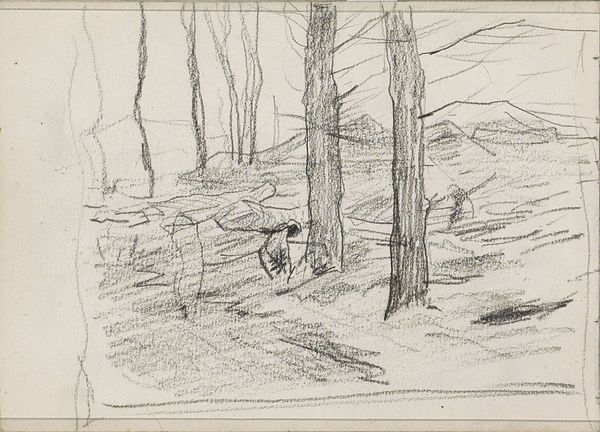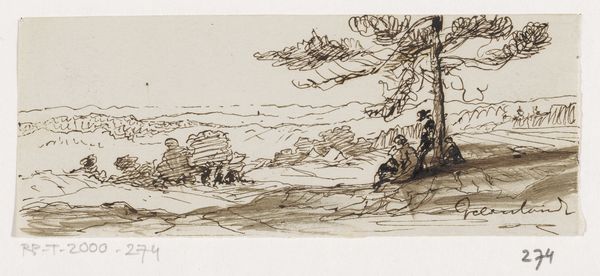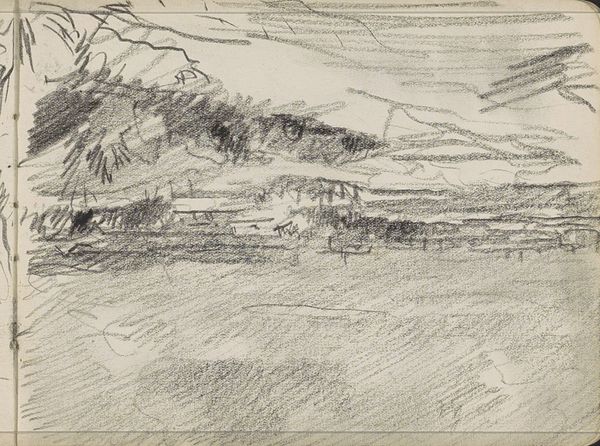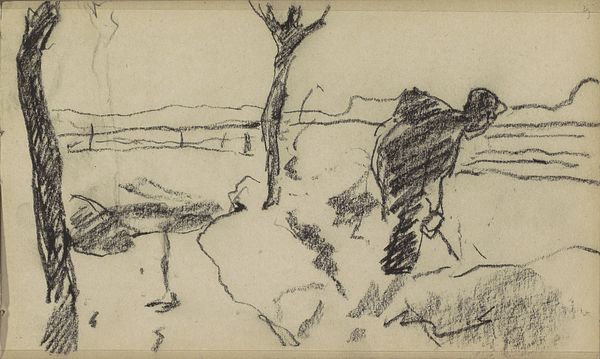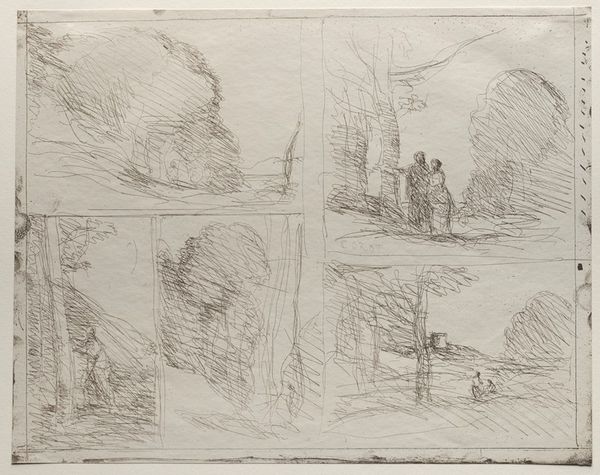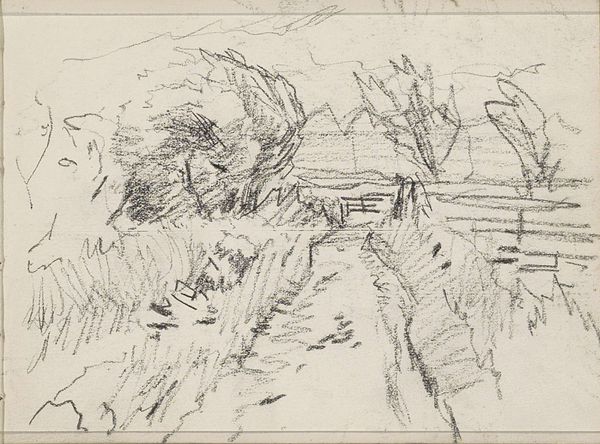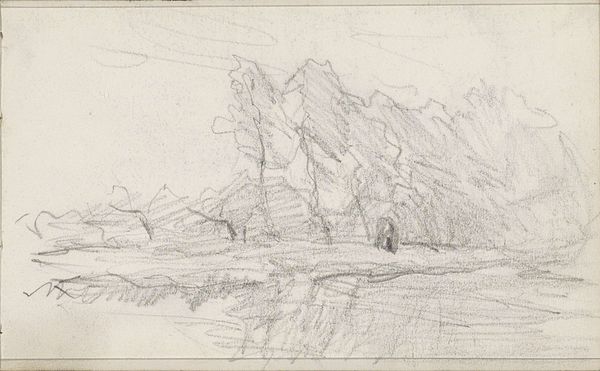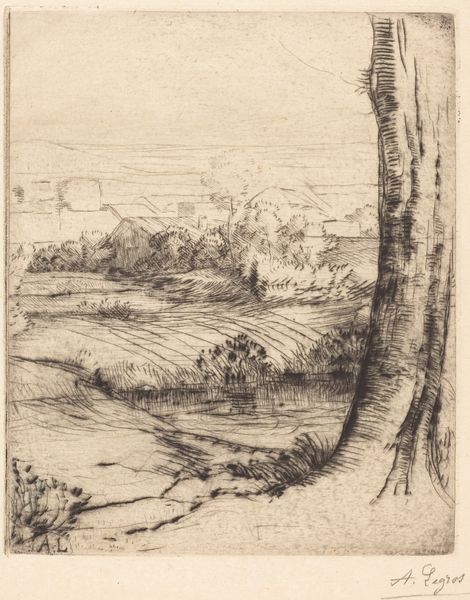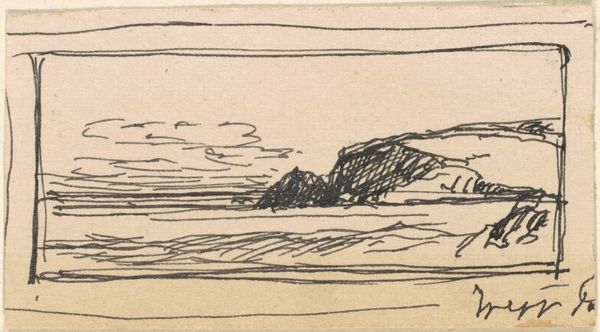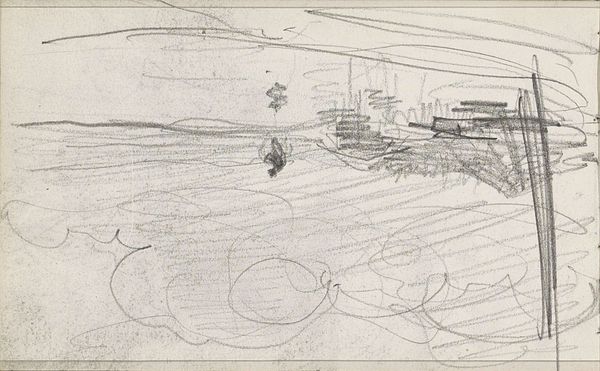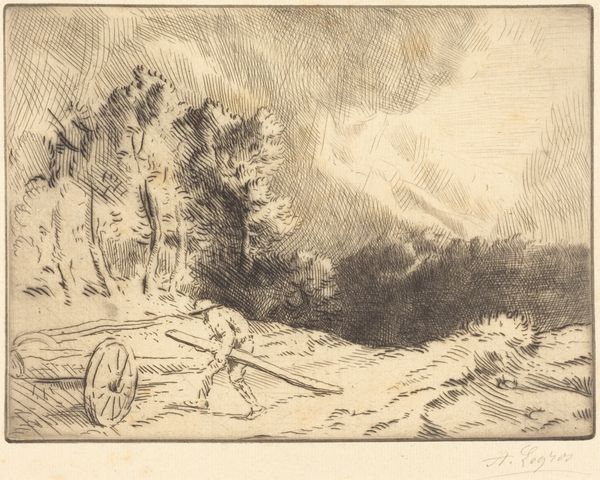
drawing, print, etching, paper
#
drawing
# print
#
etching
#
landscape
#
paper
#
france
#
line
Dimensions: 117 × 158 mm (image); 287 × 360 mm (sheet)
Copyright: Public Domain
Editor: Here we have Camille Corot's "The Tower of Henry VIII," an etching on paper from 1856. It's so... sketchy, almost like a memory fading. I’m curious about how Corot chose to represent this landscape in such a way. What do you see in this piece? Curator: What strikes me is the contrast between the seemingly idyllic landscape and the historically charged title. Henry VIII's tower evokes notions of power, patriarchal control, and religious upheaval. How does the image itself reinforce or subvert those notions, considering this was made in 19th century France, far removed from Henry's reign? Editor: I guess I hadn't thought of it that way. The loose lines and almost casual composition seem to soften any sense of harsh power. It almost feels like Corot is questioning the enduring legacy of figures like Henry VIII. Curator: Precisely! By rendering the scene with such lightness, almost impermanence, is Corot suggesting a re-evaluation of historical narratives? Consider, too, the presence of figures within the landscape – do they appear to engage with the tower, or are they simply occupying the space, perhaps signifying a shift in societal focus away from the power structures it once represented? Editor: I see what you mean! They look completely uninterested in the tower; it's just part of the scenery for them. Maybe Corot is implying a kind of indifference towards the past, or perhaps a move towards a more egalitarian present. Curator: Perhaps. The power of art lies in its ambiguity, inviting us to continually question and re-contextualize history through the lens of the present. Editor: This has definitely given me a new way of looking at landscape art, and the ways in which even seemingly simple images can carry complex social commentary.
Comments
No comments
Be the first to comment and join the conversation on the ultimate creative platform.
